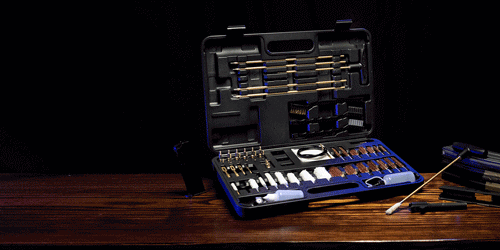Foreword
When selecting tactical gear that performs well in low-light or night-time environments, it's critical to understand the role that material choice plays in NIR compliance. Tactical operations—whether military, law enforcement, or hunting—require gear that minimizes visibility to infrared and night vision devices. NIR-compliant gear helps reduce the chances of being detected under infrared imaging, and selecting the right material is key to achieving this stealth.
What is NIR Compliance?
NIR-compliant materials are designed to minimize reflectivity in the near-infrared spectrum (700-1,000 nm). Materials that reflect infrared light too strongly can be easily detected using Night Vision Devices (NVDs) or thermal imaging. The aim of NIR-compliant gear is to ensure it blends in seamlessly with its surroundings, even when viewed through infrared sensors, providing operational advantage and enhanced stealth.
Factors to Consider When Choosing NIR-Compliant Materials
Reflectivity in the NIR Spectrum
The key to NIR compliance is selecting materials that exhibit low reflectivity in the near-infrared spectrum. Reflective materials stand out to infrared sensors, potentially exposing your position and compromising your operation. Look for fabrics that have been tested for NIR compliance, ensuring that they won’t give off excessive infrared light.
As with other considerations, you must start at the beginning—namely, the fabric. Materials like Nyco and PolyCotton have proven themselves to be durable and effective in tactical gear. These fabrics are highly comfortable and provide excellent wear resistance, which is why they’re commonly used. However, instead of looking for substitutes in the quest to improve NIR performance, a smarter approach is to enhance the fabrics we already use.
For instance:
- PolyCotton fabrics are appreciated for their durability, ease of maintenance, and ability to withstand harsh conditions, making them an excellent choice for those seeking long-lasting, practical, and comfortable materials.
- NyCo offers enhanced strength and resistance to wear and tear, making it ideal for demanding outdoor and operational environments. The blend’s rugged texture, quick-drying nature, and ability to withstand harsh conditions make it a preferred choice for uniforms, tactical vests, and other essential gear.
Durability and Wear Resistance
The fabric's durability is essential, especially in tactical environments where gear is subjected to extreme conditions. NyCo, with its tear-resistant properties, is a great option for tactical vests, backpacks, and other high-use items. PolyCotton, while slightly less durable, are often used in items that prioritize comfort and breathability, such as shirts or light jackets.Infrared-Absorbing Coatings
While the fabric itself is important, the coatings applied to the material can significantly improve NIR compliance. Infrared-absorbing coatings, such as polyurethane or ceramic-based treatments, are commonly used to reduce infrared reflectivity. These coatings are often applied to materials like nylon or polyester to enhance their stealth properties, making them more effective in the field.
Camouflage Patterns and Dyeing Techniques
In addition to the material itself, camouflage patterns and dyeing techniques can impact how well a piece of gear blends into its environment under infrared imaging. Some patterns and dyes absorb infrared light, which helps keep the wearer or operator hidden. The use of Multicam or A-TACS camouflage patterns, combined with infrared-absorbing dyes, is often used in high-performance tactical gear to ensure both visible and infrared concealment.
Comfort and Weight Considerations
While NIR compliance is critical, comfort and weight also matter, especially for extended operations. Tactical gear that is too heavy or uncomfortable can hinder performance. Look for fabrics that balance infrared stealth with comfort.
Cost vs. Performance
There’s a balance between cost and performance when selecting NIR-compliant materials. While advanced NIR-compliant materials and coatings can be more expensive, they offer superior stealth and durability, which can be invaluable during high-risk operations. Evaluate your specific needs—whether you need extreme stealth for covert missions or simply enhanced performance for hunting—and choose the material that best fits your budget and operational requirements.
Conclusion
When choosing the right NIR-compliant material for your tactical gear, the starting point should always be the fabric. Nyco and cotton-polyester blends are excellent foundational fabrics, offering a balance of durability, comfort, and performance. Instead of searching for substitutes, the smarter approach is to improve upon the fabrics we already rely on by incorporating infrared-absorbing coatings, camouflage patterns, and specialized dyeing techniques. By enhancing these materials, you can create highly effective NIR-compliant gear that ensures stealth, durability, and comfort in tactical operations.
Investing in high-quality NIR-compliant materials will provide the operational edge you need, allowing you to remain hidden from infrared sensors and perform effectively in challenging conditions. Whether you're involved in military, law enforcement, or tactical hunting, the right material ensures that your gear provides both protection and invisibility under infrared detection.
Shop the Gloryfire Upgraded NIR-Compliant Tactical Vest Now!






